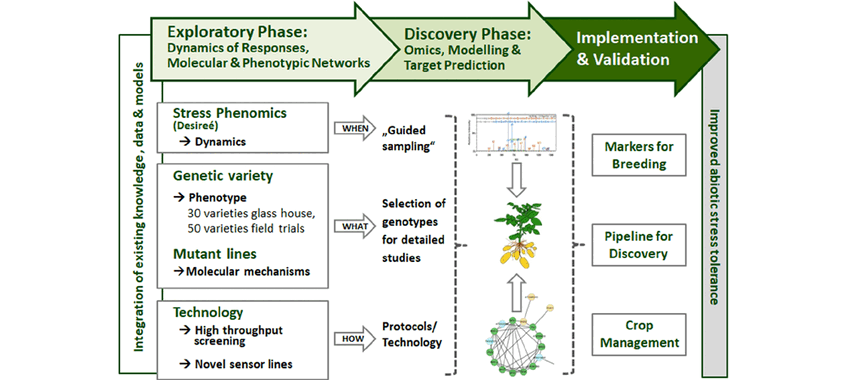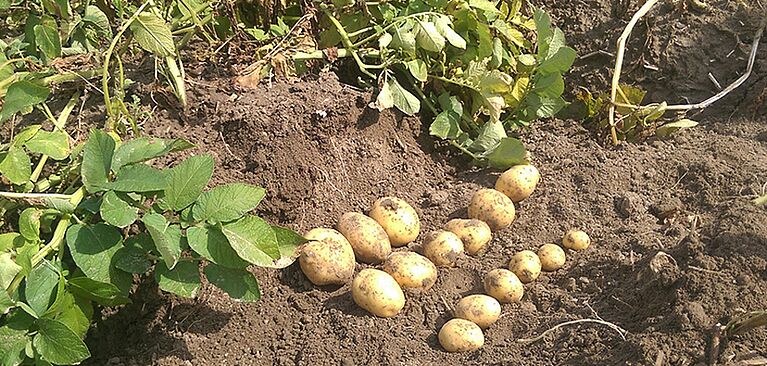Our experimental approach – Time scale and working packages (WPs)

The working plan of ADAPT is divided in six working packages
WP1 aims at developing high-resolution field and greenhouse phenotyping methods to analyse physiological and molecular responses to combined abiotic stress conditions. Various field trials will carried out at different European locations in cooperation with breeders. Locally, newest technologies such as the mobile Field Explorer will monitor plant growth and development with sensors for 3D plant modelling (LIDAR), photosynthetic performance (hyperspectral camera), transpiration (IR sensor).
WP2 will use tailor-made tools and high-throughput techniques. We will identify the morphological, physiological and molecular changes that determine potato resilience to both single stresses (flooding, heat and drought) and relevant combinations of these stresses.
WP3 looks at the production of tubers, the edible part of the plant, which is typically shut down under climatic stress conditions such as heat or drought stress. We shall build on our prior research into tuber development and aim to identify strategies for increasing climate resilience using naturally occurring gene variants and functional genomics approaches.
WP4 investigates early signalling events that regulate the molecular and physiological changes required for plant survival under stress conditions. To that end, we will develop sensor and gene reporter lines to monitor dynamic changes in stress signalling in real time and under HTP conditions.
WP5 will use prior knowledge and data generated within the project to feed diverse mathematical modelling and big data analysis approaches for identification of novel molecular master regulators and physiological signatures associated to the performance of the potato in the field environment. We will also provide a set of tools for easier implementation of diverse technologies in practice.
WP6 ensures the targeted and efficient exploitation and implementation of the project results, and their communication and dissemination to different target audiences. To this end, the results are validated by close interaction between the scientific and industrial partners. Stakeholders and end-users benefit from a well-designed exploitation plan, and a clear communication and dissemination strategy.
